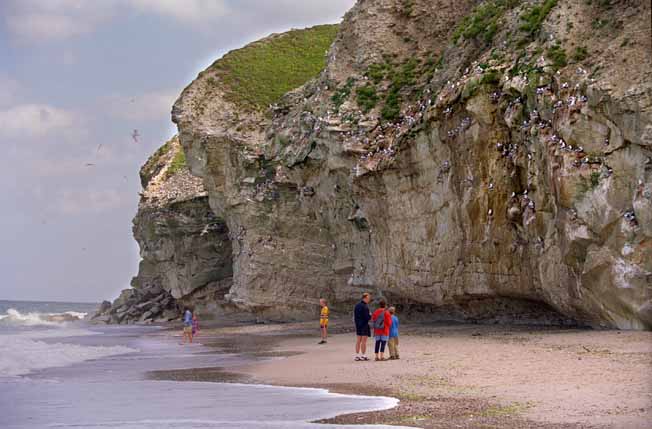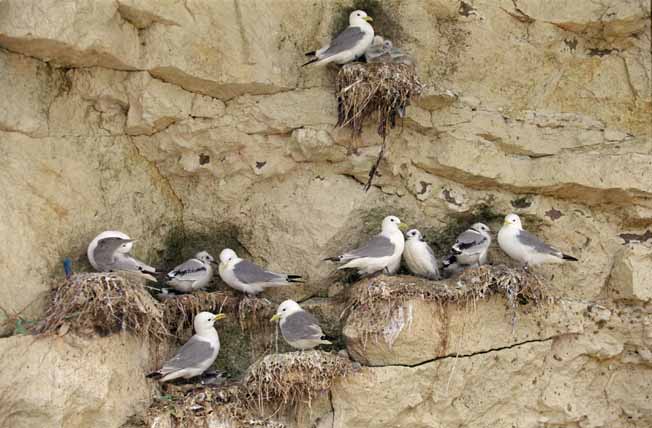|
A bird-cliff in low-land Denmark. Black-legged Kittiwakes (Rissa tridactyla) breeding at Bulbjerg, a lime-stone cliff raising its 47 meters above the North Sea on the northern west coast of peninsula Jutland.
Here 450 birds counts up to be Denmarks largest gathering of Kittiwakes.
And a beautiful sight too.
Giving space only for a few couples of Northern Fulmars.
By the way last year ( the year 2000 ) Bulbjerg housed Denmarks first ever breeding couple of Northern Fulmars. Kittiwakes have been breeding in this country since 1941, but not in this particular place untill year 1978 and 535 nests were counted here in 1996.
This is less than half a promille of the entire European population, but then again more than 10 time the amount of Kittiwakes that find their way to the Swedish coasts.
As opposes to this Norway with its North Atlantic coastline houses close to half a million breeding-pairs, cause Kittiwakes are pelagic birds.
A bird of the open sea.
Outside breeding season, it spends its time including wintertime, mid ocean, present all accross the Atlantic, with especially immatures of the European population finding their way to the Canadian coasts.
This is an animal of the open sea with a dislike for flying over land, and only do so forced by severe weather, the need for freshwater or nesting material.
All this in a corner on the Jutland westcoast that is certainly less visited than Skagen and less fashionable than the northern-most part of the peninsulas North-Sea coast, were the money vacate.
No souvenir-shops not even an Ice-cream stand. Just the parking lot and a toilet sign painted in black, with a two inch brush, on a concrete bunker.
|


